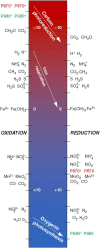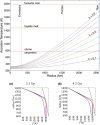Investigating Europa's Habitability with the Europa Clipper
- PMID: 38046182
- PMCID: PMC10687213
- DOI: 10.1007/s11214-023-01025-2
Investigating Europa's Habitability with the Europa Clipper
Abstract
The habitability of Europa is a property within a system, which is driven by a multitude of physical and chemical processes and is defined by many interdependent parameters, so that its full characterization requires collaborative investigation. To explore Europa as an integrated system to yield a complete picture of its habitability, the Europa Clipper mission has three primary science objectives: (1) characterize the ice shell and ocean including their heterogeneity, properties, and the nature of surface-ice-ocean exchange; (2) characterize Europa's composition including any non-ice materials on the surface and in the atmosphere, and any carbon-containing compounds; and (3) characterize Europa's geology including surface features and localities of high science interest. The mission will also address several cross-cutting science topics including the search for any current or recent activity in the form of thermal anomalies and plumes, performing geodetic and radiation measurements, and assessing high-resolution, co-located observations at select sites to provide reconnaissance for a potential future landed mission. Synthesizing the mission's science measurements, as well as incorporating remote observations by Earth-based observatories, the James Webb Space Telescope, and other space-based resources, to constrain Europa's habitability, is a complex task and is guided by the mission's Habitability Assessment Board (HAB).
Keywords: Europa; Habitability; Ice; Jupiter; Ocean worlds.
© The Author(s) 2023.
Conflict of interest statement
Competing InterestsThe authors have no competing interests to declare that are relevant to the content of this article.
Figures












References
-
- Affholder A, Guyot F, Sauterey B, Ferrière R, Mazevet S. Bayesian analysis of Enceladus’s plume data to assess methanogenesis. Nat Astron. 2021;5(8):805–814. doi: 10.1038/s41550-021-01372-6. - DOI
-
- Allu Peddinti D, McNamara AK (2015) Material transport across Europa’s ice shell. Geophys Res Lett 42. 10.1002/2015GL063950
-
- Altwegg K, et al. Evidence of ammonium salts in comet 67P as explanation for the nitrogen depletion in cometary comae. Nat Astron. 2020;4:533–540. doi: 10.1038/s41550-019-0991-9. - DOI
-
- Alvarellos J, Zahnle K, Dobrovolskis A, Hamill P. Transfer of mass from Io to Europa and beyond due to cometary impacts. Icarus. 2008;194(2):636–646. doi: 10.1016/j.icarus.2007.09.025. - DOI
Publication types
LinkOut - more resources
Full Text Sources
